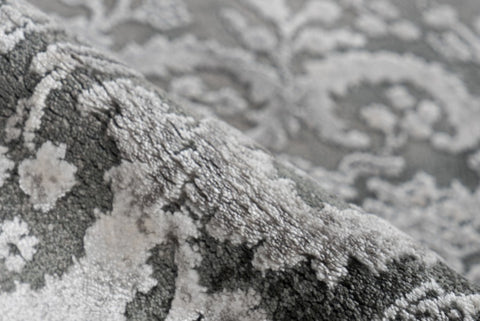Rug Quality Guide: How You Can Tell If a Rug is Good Quality

Selecting the right rug is more than just a decorative decision; it's a foundational element that sets the tone for your room's aesthetic and comfort. With a myriad of options available, discerning the quality of a rug becomes paramount. This guide delves into the nuances of rug quality, emphasizing the importance of density over thickness, the impact of various fibers on quality, and seamlessly addressing common inquiries woven into the fabric of our discussion. For those looking to explore a wide selection of high-quality rugs, we may be biased slightly but Adore Rugs offers an extensive collection that caters to diverse tastes and requirements.
The True Measure of Quality: Density Over Thickness
A prevalent myth in rug selection is equating thickness with quality. However, the real hallmark of a high-quality rug is its density—the compactness of its fibers. A dense rug not only provides a sumptuous feel underfoot but also boasts superior durability and longevity. This brings us to a common question: "How can you tell if a rug is high quality?" The answer lies in testing the rug's density by pressing down on the pile; the more challenging it is to reach the backing, the denser and, thus, the higher quality the rug.

Fiber Types and Their Impact on Quality
The type of fiber used in a rug plays a crucial role in its quality, durability, and overall feel, leading many to wonder, "What makes a rug good quality?"
-
Wool: Wool rugs are renowned for their durability, softness, and natural resistance to stains and dirt. They are a testament to quality and craftsmanship, offering a luxurious feel that is hard to match. The natural resilience and durability of wool make these rugs a wise investment for both high-traffic areas and cozy spaces. However, wool rugs do tend to be slightly pricier than other fibres.
-
Polyester and Polypropylene: These synthetic fibers are known for their stain resistance and affordability. They can mimic the look of natural fibers quiet well but they do tend to lack depth of texture found in wool rugs. This leads to the question, "How can you tell if a synthetic rug is of good quality?" Look for synthetic rugs that are well-constructed with tight weaves or tufts and a strong backing.
-
Acrylic: Acrylic rugs are characterized by their inherent shine, setting them apart in the synthetic rug market. Acrylic rugs offer a vibrant color palette and are relatively durable, making them a versatile choice. However, they do not offer the same natural feel as wool, prompting the question, "How do you know if an acrylic rug is of good quality?" High-quality acrylic rugs should have a lustrous finish, firm backing, and a dense pile.
Assessing Rug Quality Beyond the Surface
Delving deeper into the aspects of rug quality requires an understanding of several key factors that might not be immediately visible:
-
Knot Count and Construction: The knot count, particularly in hand-knotted rugs like Persian or Oriental rugs, significantly impacts the rug's durability, texture, and value. A higher knot count typically indicates a more intricately designed rug, capable of withstanding wear and tear over many years. Beyond the count, the construction method—whether hand-knotted, hand-tufted, or machine-made—also plays a critical role in determining a rug's longevity and quality. Hand-knotted rugs, for example, are highly prized for their craftsmanship and durability, often becoming heirloom pieces passed down through generations.
-
Backing Quality: A rug's backing is not just a structural element; it's indicative of the rug's overall quality and durability. A high-quality backing keeps the rug's shape, ensures it lies flat against the floor, and extends its lifespan by protecting the fibers from excessive wear. When examining a rug, check for a backing that is securely attached and made from high-quality materials. This is particularly important in hand-tufted rugs, where the backing plays a crucial role in holding the tufts in place.
-
Edge Finishing: The finishing of a rug's edges and fringes can reveal much about its craftsmanship. Hand-serged edges, for example, are meticulously crafted to ensure durability and prevent fraying, reflecting the artisan's skill and attention to detail. In contrast, poorly finished edges may fray or unravel, compromising the rug's aesthetic and structural integrity. When selecting a rug, closely inspect the edges and fringes for signs of quality craftsmanship, such as even stitching and robust materials.
-
Color and Design Clarity: The vibrancy and clarity of a rug's colors, as well as the precision of its design, are markers of high-quality craftsmanship. Premium rugs boast colors that resist fading over time and designs that are sharp and clearly defined, reflecting the skill of their makers. The dyeing process and quality of dyes used also play a significant role in the rug's appearance and longevity. Natural dyes tend to offer richer, more nuanced shades that age beautifully over time, while high-quality synthetic dyes ensure colorfastness and resistance to fading.

Understanding the intricacies of rug quality involves more than just picking out a style or color that suits your home. It's about recognizing the significance of fiber density, the distinct qualities of different materials, and the craftsmanship that goes into each piece. By considering these deeper aspects of rug quality, you can make an informed decision, ensuring your investment in a rug brings beauty, comfort, and durability to your home.
SHARE:



